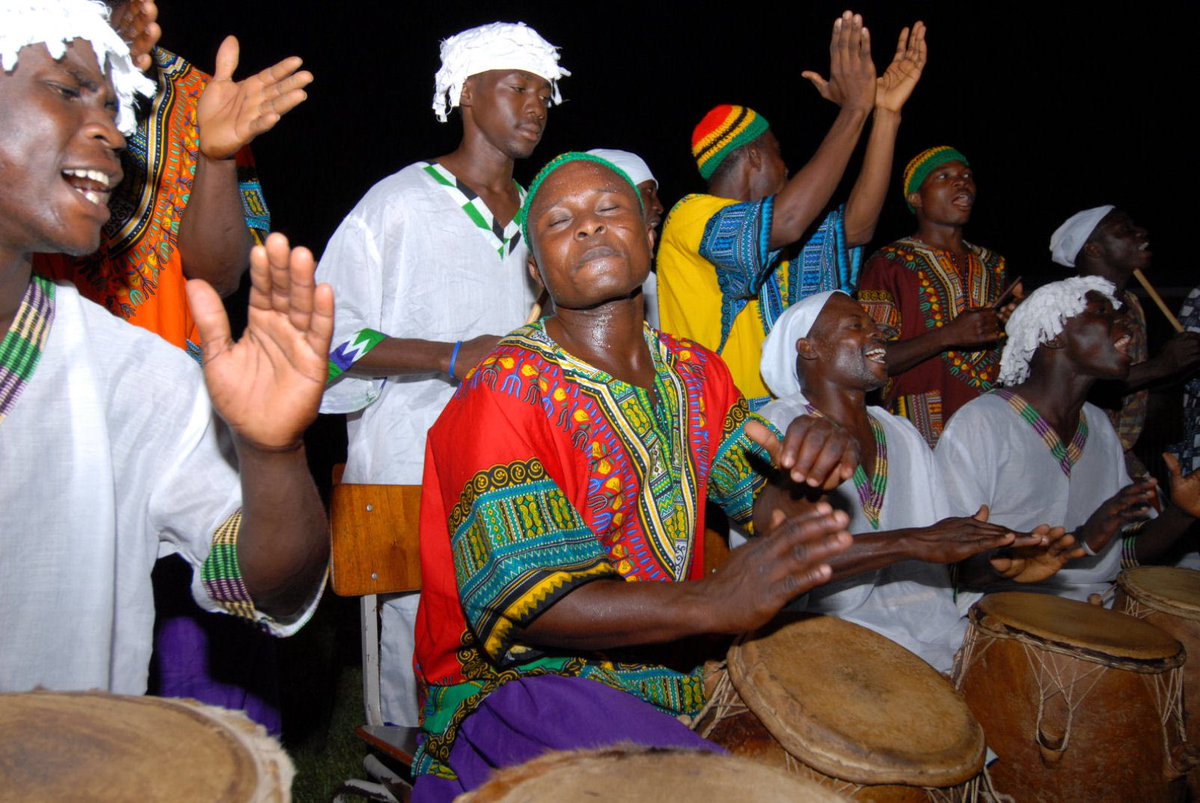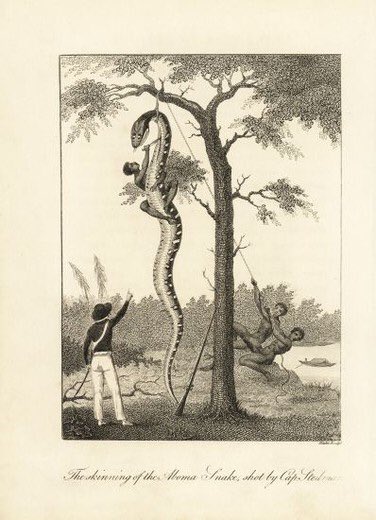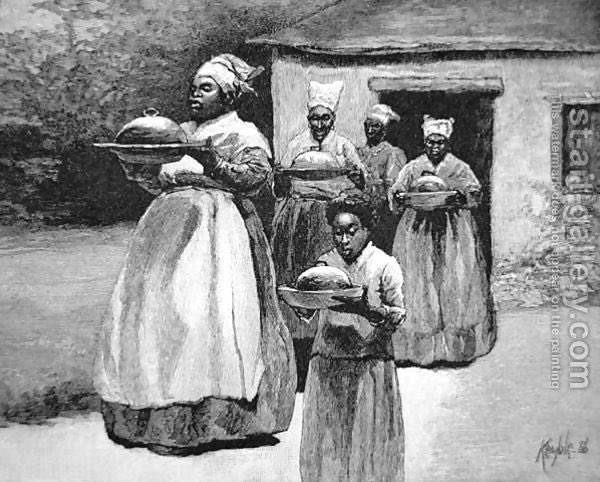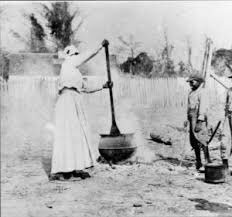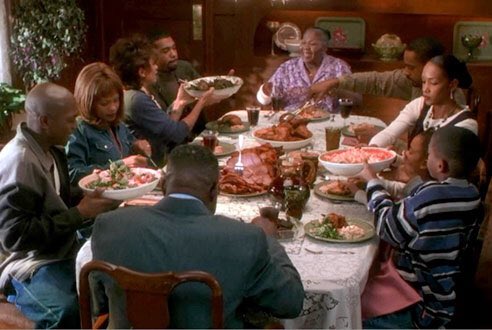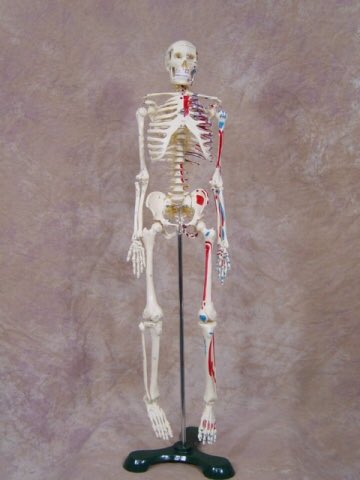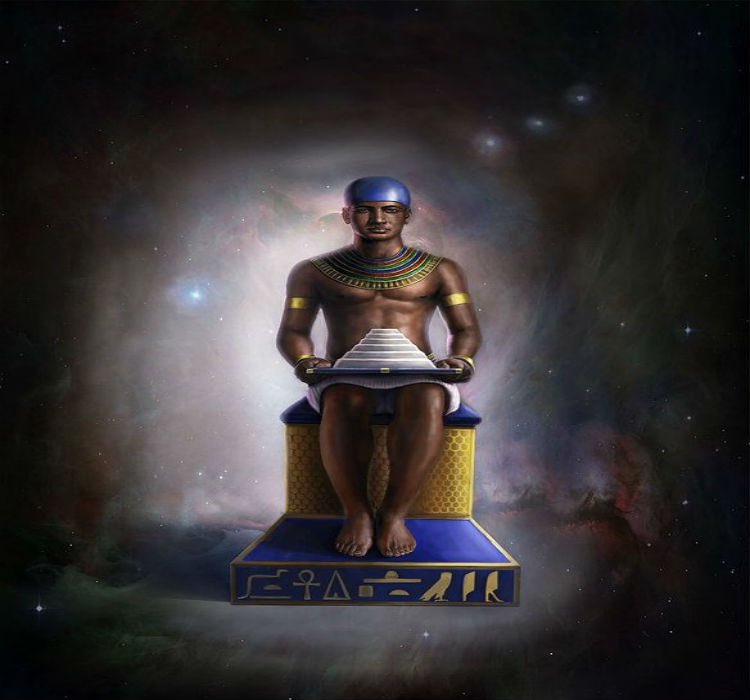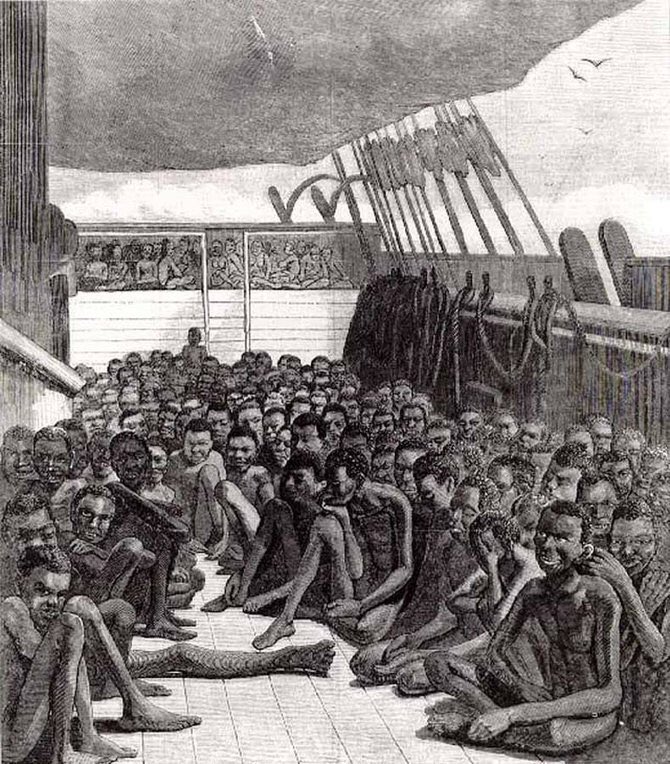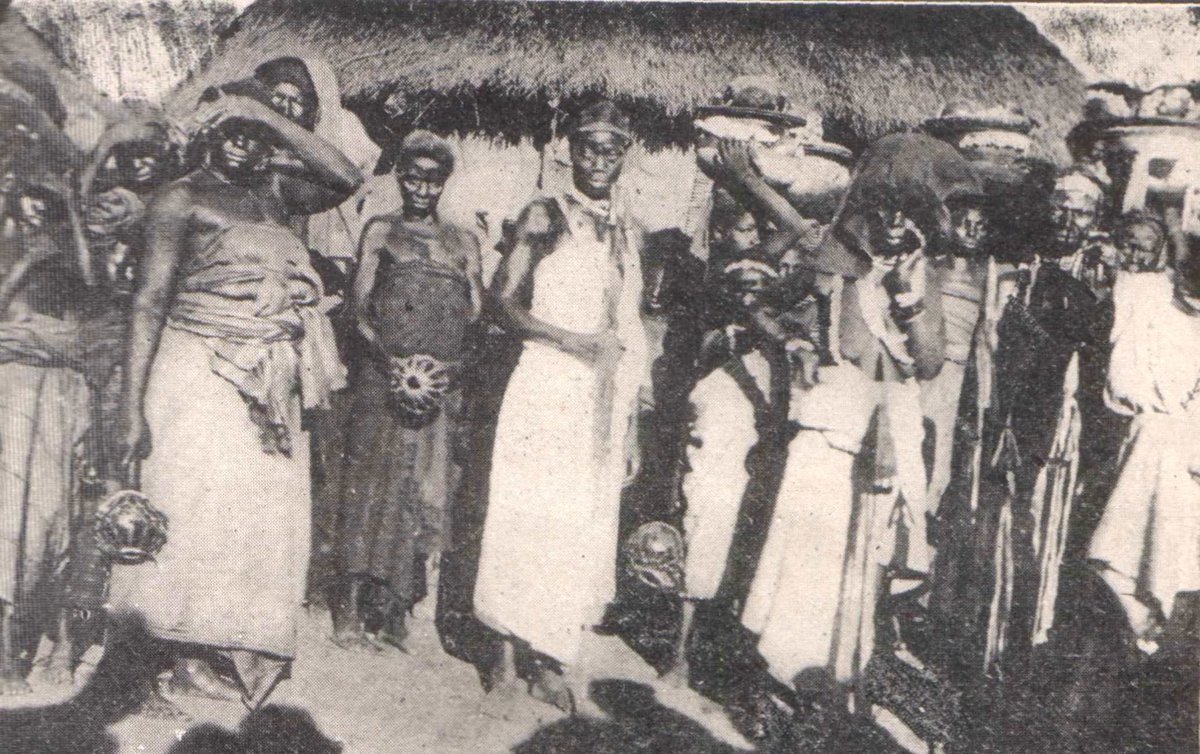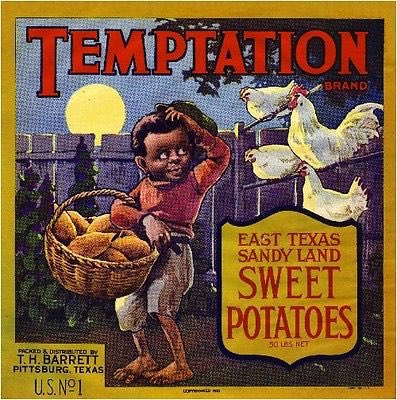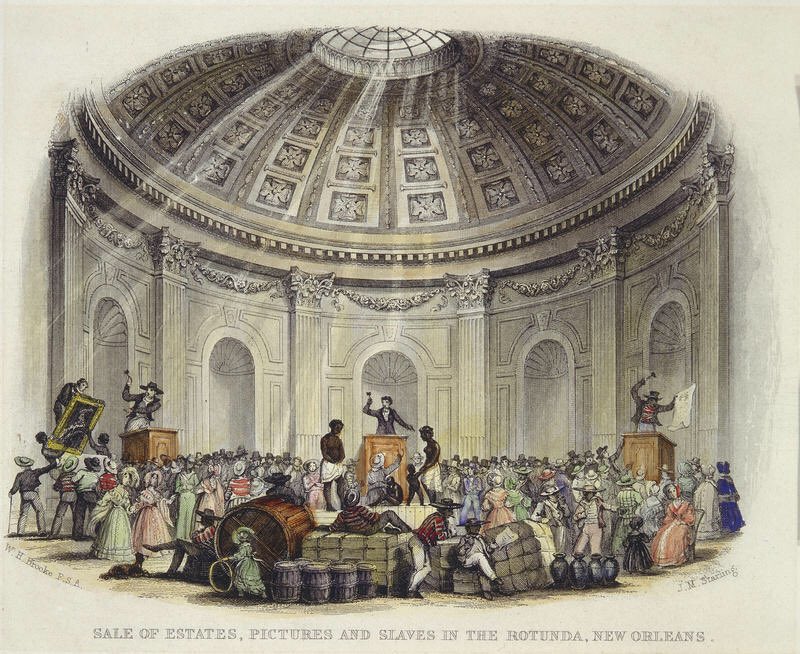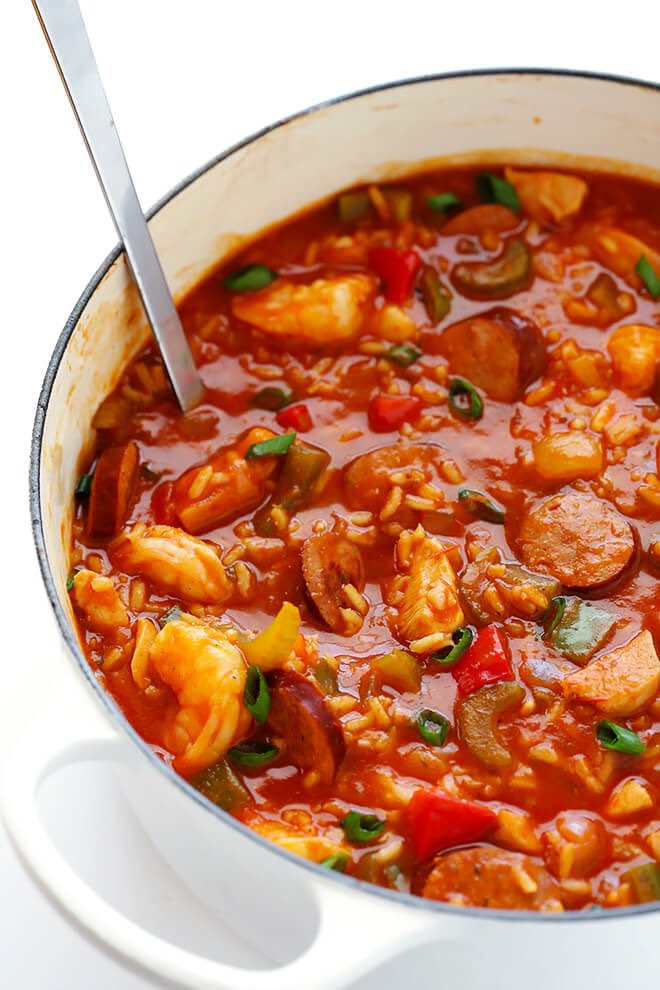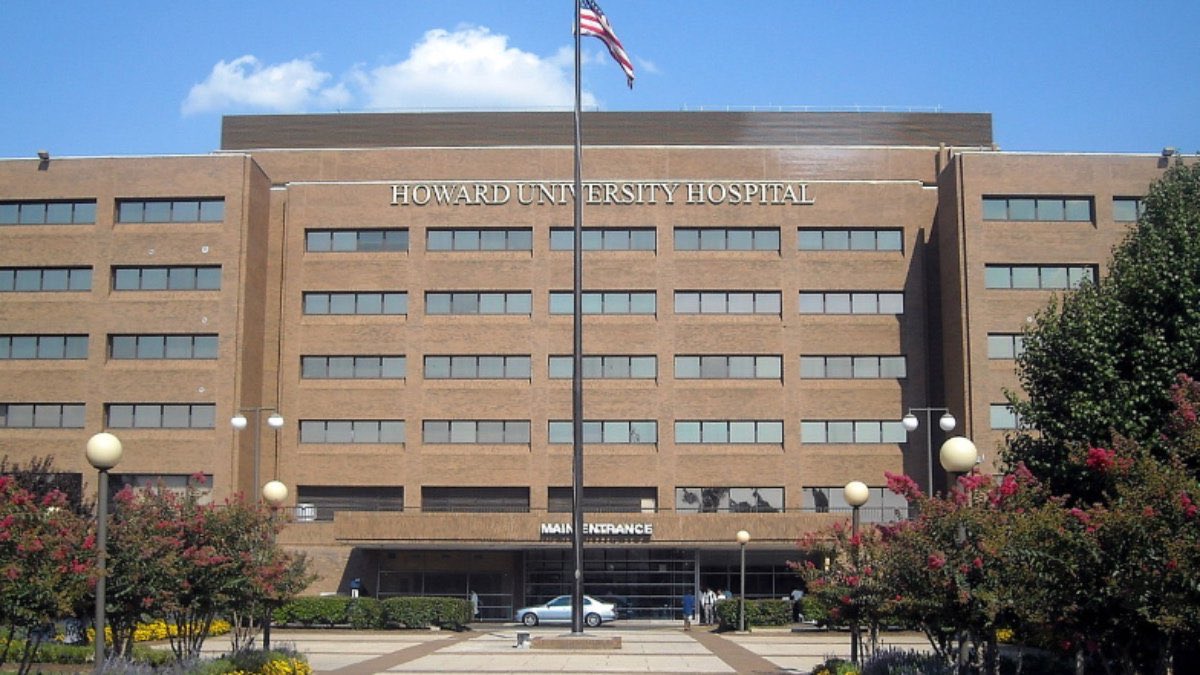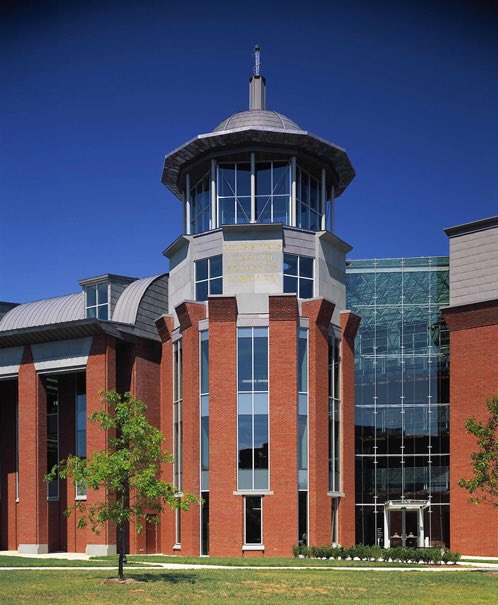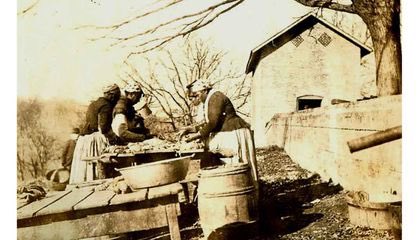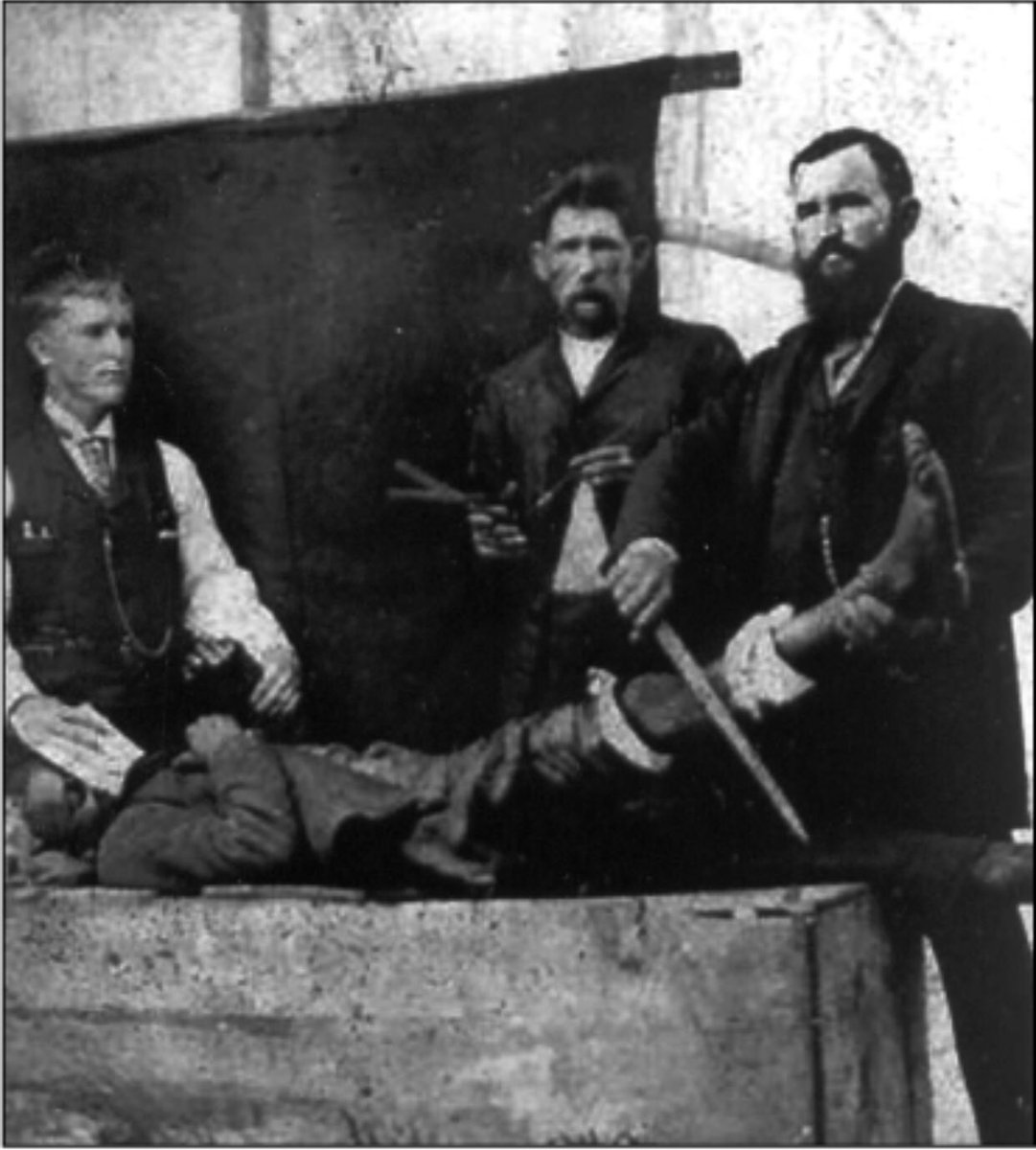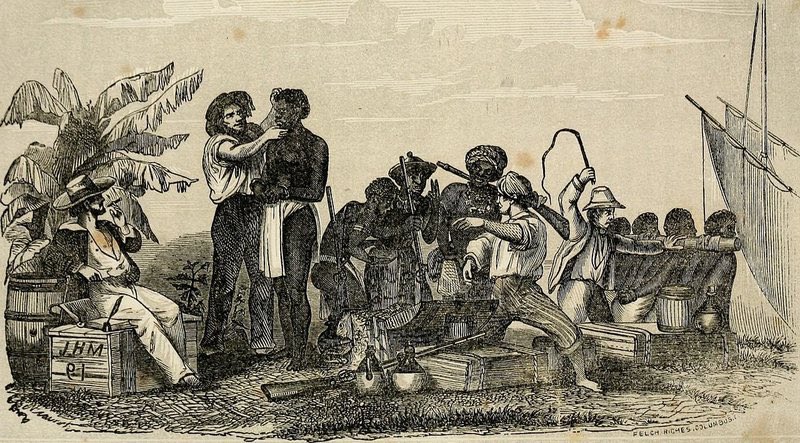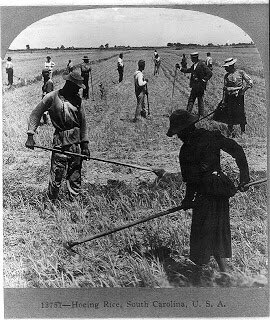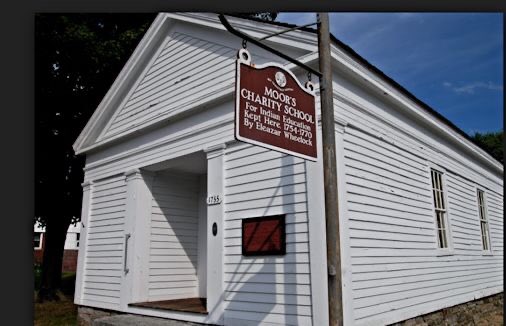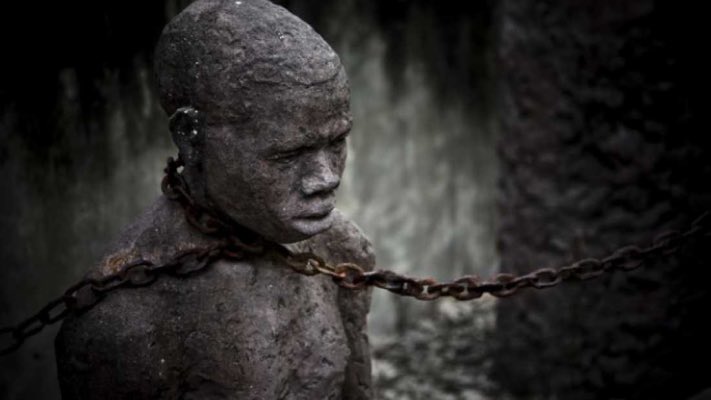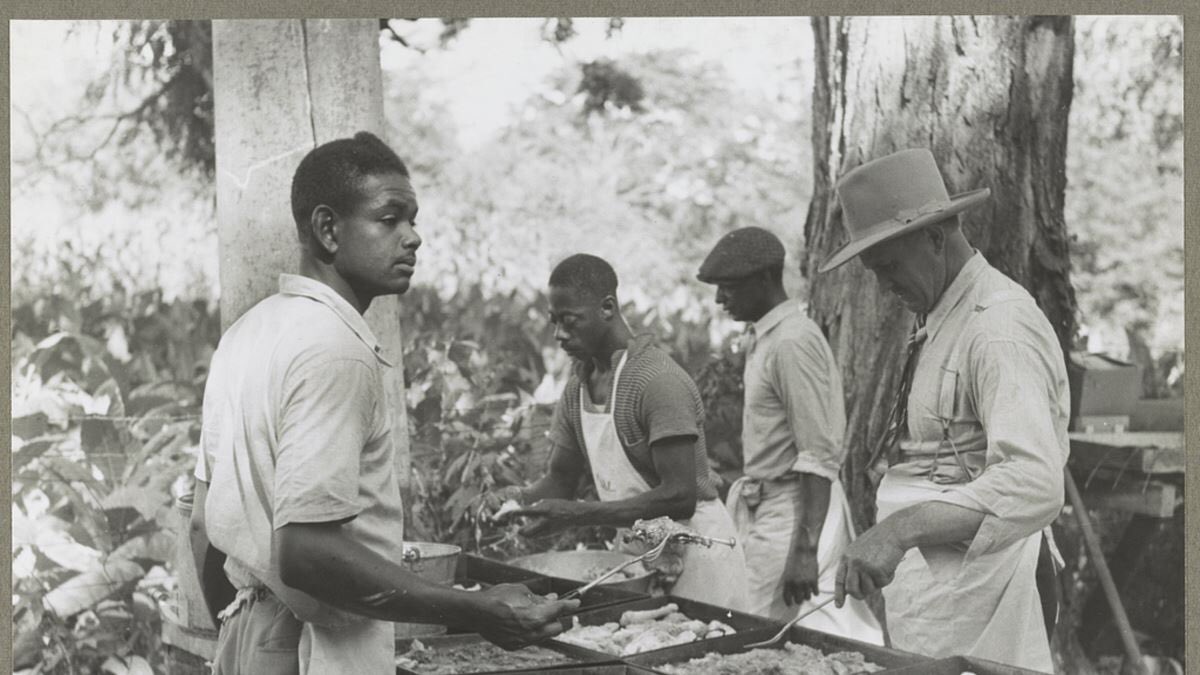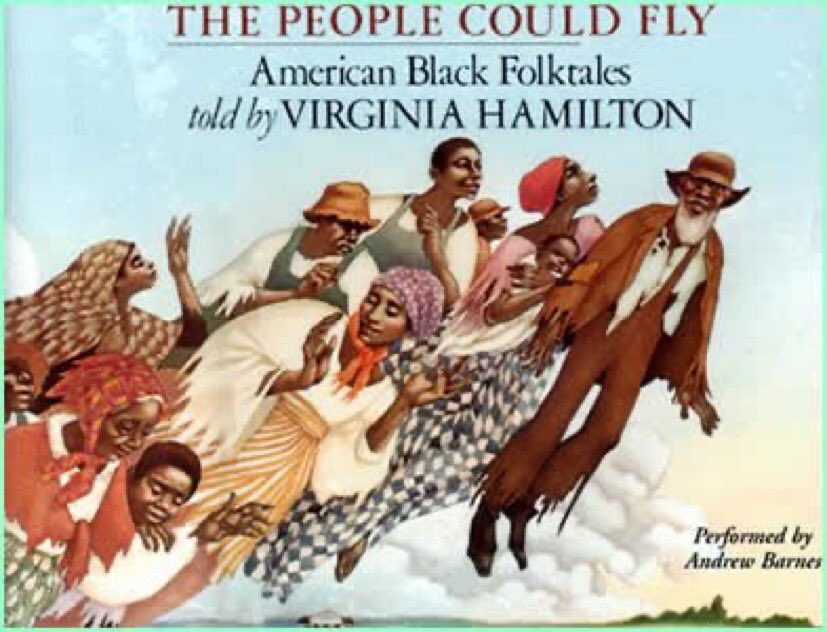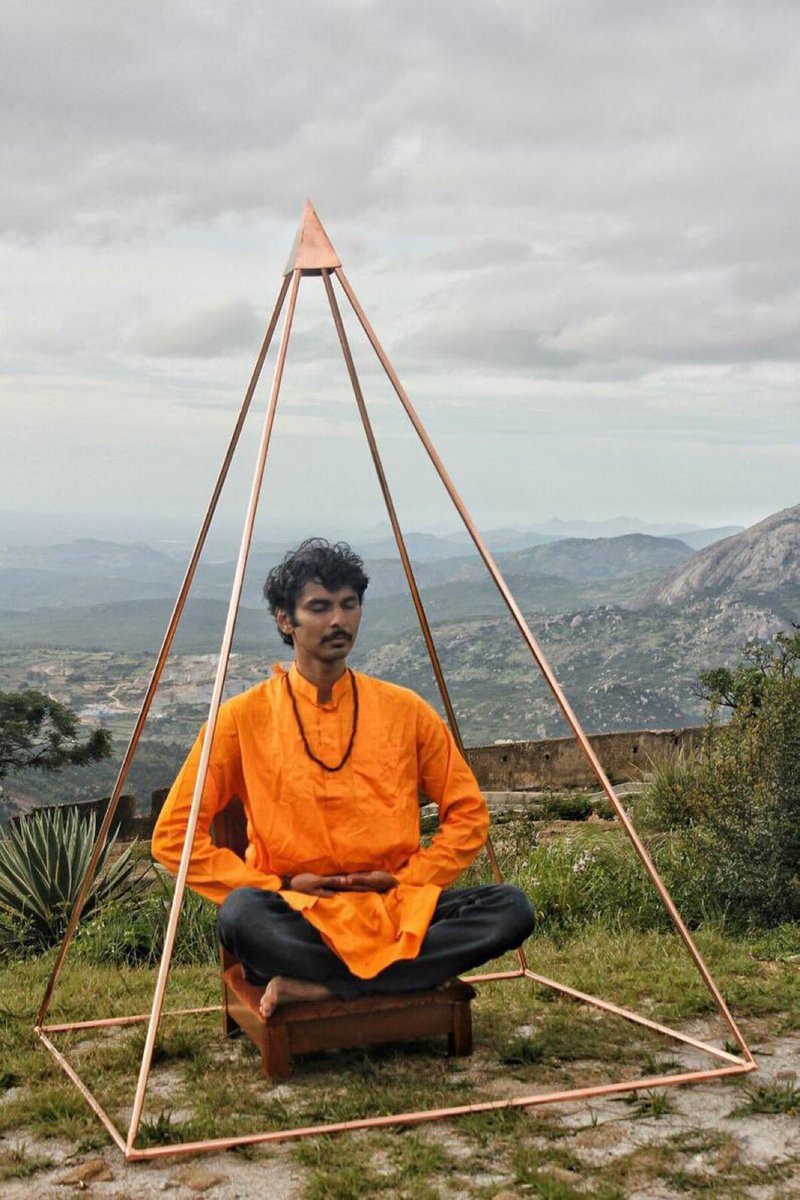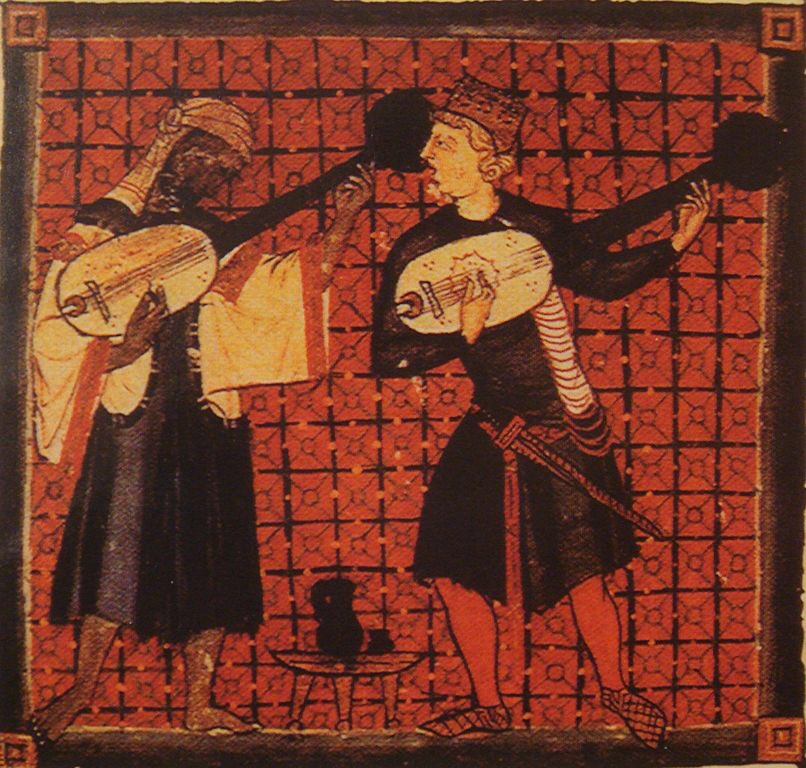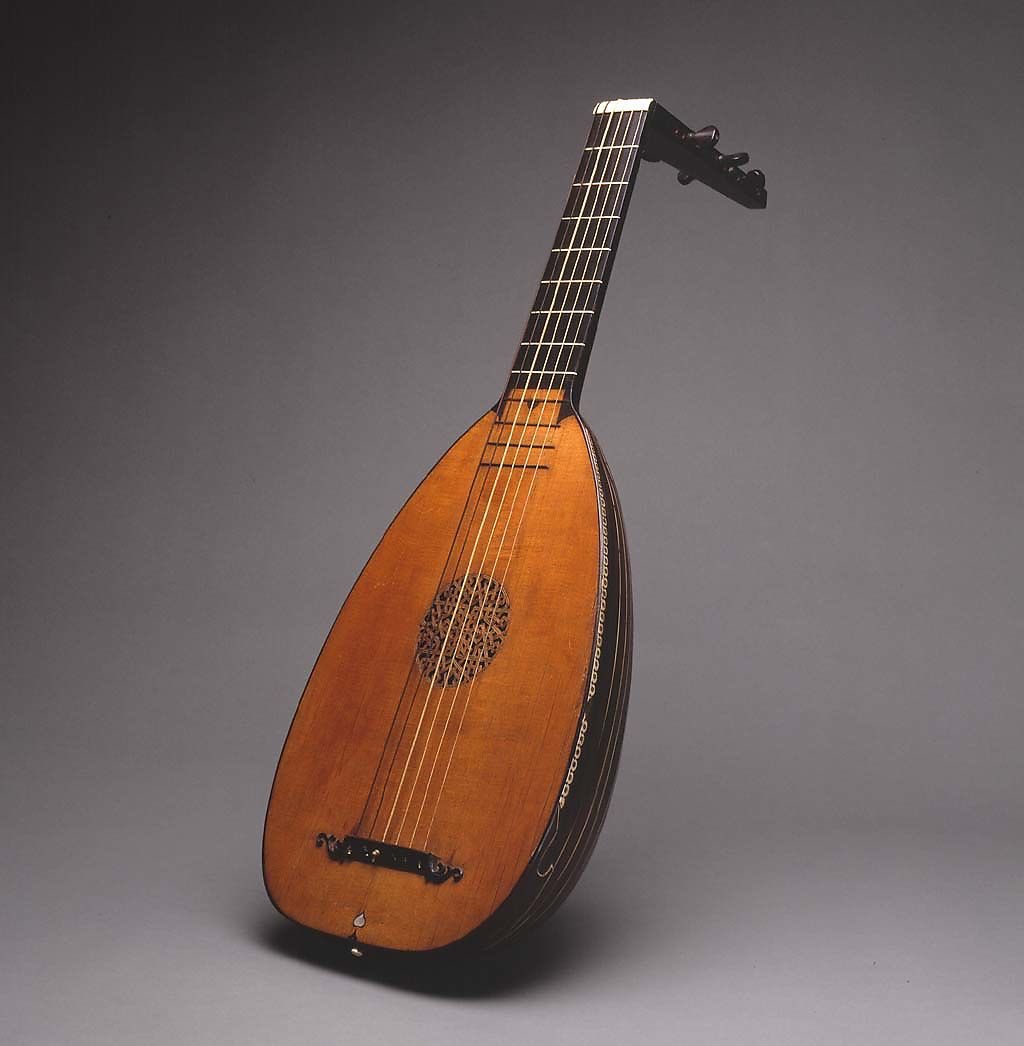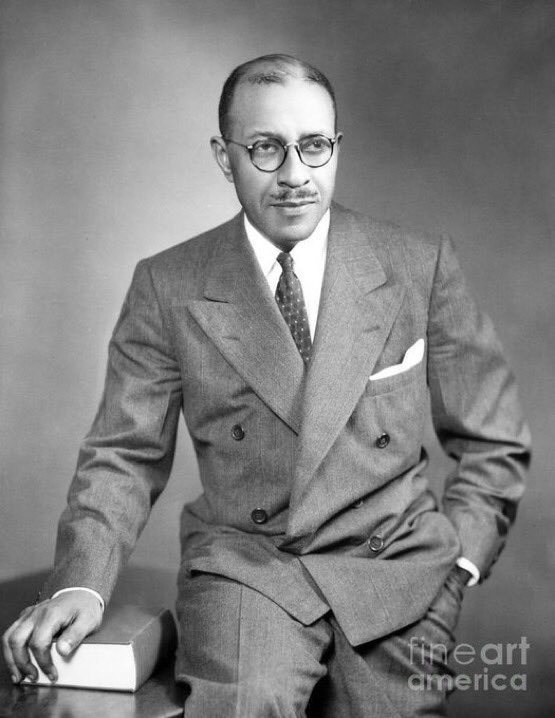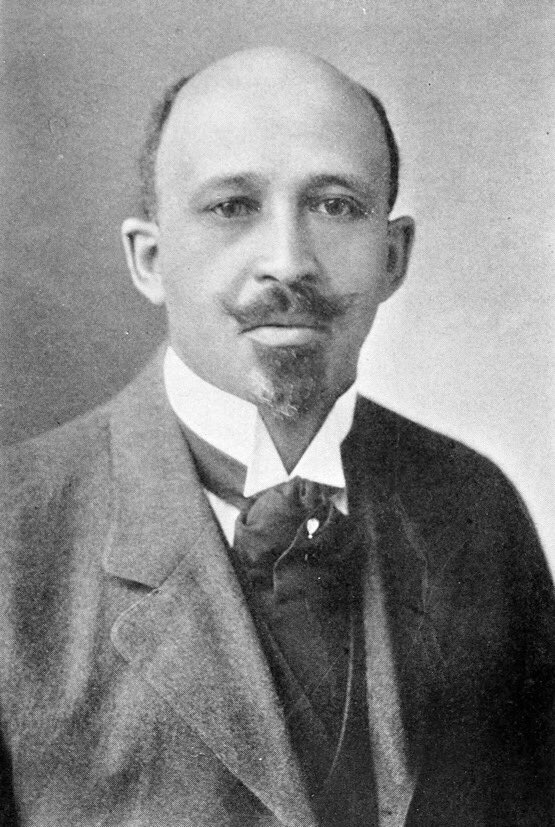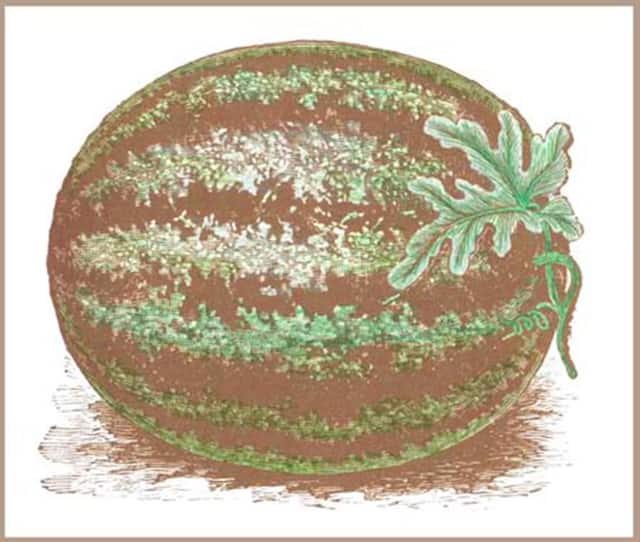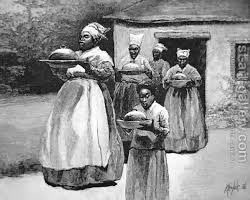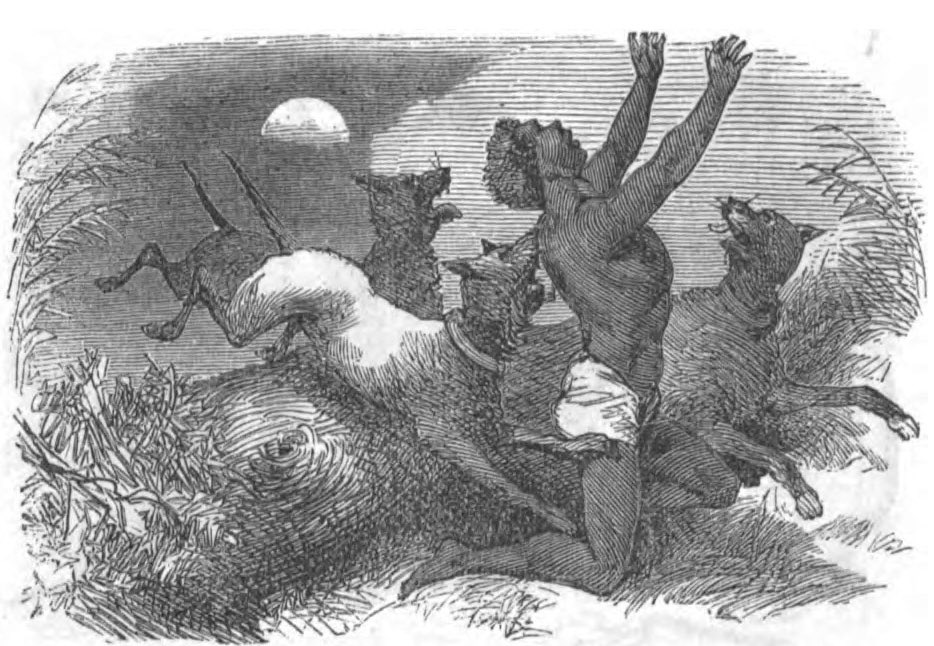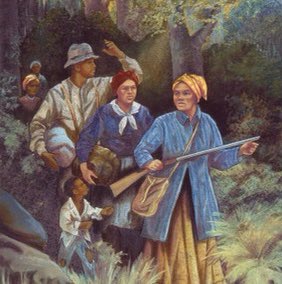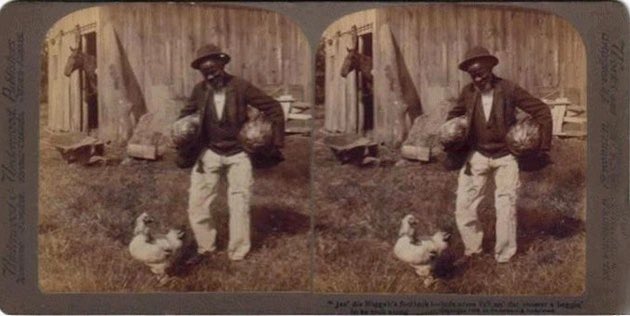This thread might jump around a tad bit but that’s ok. Also check out my thread dedicated to black women. https://twitter.com/coachwilmore_/status/1091504657044779008?s=21
#1: BBQ
BBQ originally began with the roasted pig. In West Africa, hogs were prepared by burning their hair off with brown sage, then washed & roasted. Slaves were often called on during the 4th of July to help their masters win over constituents with the BBQ they cooked.
BBQ originally began with the roasted pig. In West Africa, hogs were prepared by burning their hair off with brown sage, then washed & roasted. Slaves were often called on during the 4th of July to help their masters win over constituents with the BBQ they cooked.
#2: Origins of vaccinations (Part 1)
Africans contributed to a number of cures for diseases in America based on their knowledge from the Old World. They’re credited with bringing over folk treatment for small pox, snake bites, the c-section/midwifery procedures & other poisons.
Africans contributed to a number of cures for diseases in America based on their knowledge from the Old World. They’re credited with bringing over folk treatment for small pox, snake bites, the c-section/midwifery procedures & other poisons.
#3: Gumbo
Classic gumbo did not include shellfish, chicken, turkey, ham, sausage etc. Gumbo or Gombo is a Bantu word meaning “okra”. This new style gumbo is characterized as faux gumbo and holds more of a European foundation.
Classic gumbo did not include shellfish, chicken, turkey, ham, sausage etc. Gumbo or Gombo is a Bantu word meaning “okra”. This new style gumbo is characterized as faux gumbo and holds more of a European foundation.
#4: The Watermelon Contest
Before emancipation, watermelon was associated with peasantry. After emancipation, the convenience of watermelon helped blacks become self sufficient off of it. A film that continued the stereotype that blacks loved the fruit was The Watermelon Contest
Before emancipation, watermelon was associated with peasantry. After emancipation, the convenience of watermelon helped blacks become self sufficient off of it. A film that continued the stereotype that blacks loved the fruit was The Watermelon Contest
#5: Music (Part 1)
To the Minianka people, it’s unheard of for the responsibilities of music making and restoring health to be separate as they are in the West. Music in their culture keeps order/sustains harmony within and it also enhances the life process in the crops.
To the Minianka people, it’s unheard of for the responsibilities of music making and restoring health to be separate as they are in the West. Music in their culture keeps order/sustains harmony within and it also enhances the life process in the crops.
#6: The Rattlesnake Master
As a slave, Caesars freedom was purchased by the General Assembly and they granted him a pension of 100 pounds per month for life in exchange for his cures of those who’d been bit by a rattlesnake or had swallowed poison. The herb he used was aloe.
As a slave, Caesars freedom was purchased by the General Assembly and they granted him a pension of 100 pounds per month for life in exchange for his cures of those who’d been bit by a rattlesnake or had swallowed poison. The herb he used was aloe.
#7: Soul Food
The term “soul food” did not come into widespread usage until the 1960s. The meals made from leftovers during slavery were called juba. The juba was placed in a large pot, and the slaves working in the Big House would share with those in the field.
The term “soul food” did not come into widespread usage until the 1960s. The meals made from leftovers during slavery were called juba. The juba was placed in a large pot, and the slaves working in the Big House would share with those in the field.
#8: Collard Greens
Greens were introduced to Africans through Europeans during the transatlantic slave trade and a “mess o greens” was known as a family serving of greens. They would also be served on New Years as tradition along w/ Hoppin’ John or black eyed peas and rice.
Greens were introduced to Africans through Europeans during the transatlantic slave trade and a “mess o greens” was known as a family serving of greens. They would also be served on New Years as tradition along w/ Hoppin’ John or black eyed peas and rice.
#9: Sunday tradition
During slavery, Sunday was the only day slaves were allowed to prepare foods that involved “prestige” ingredients so Sunday dinners were highly anticipated. Foods made only on Sunday were: fried chicken, hams, biscuits/rolls, cakes, cobblers, spoonbread etc.
During slavery, Sunday was the only day slaves were allowed to prepare foods that involved “prestige” ingredients so Sunday dinners were highly anticipated. Foods made only on Sunday were: fried chicken, hams, biscuits/rolls, cakes, cobblers, spoonbread etc.
#10: Cato
Cato was a slave who worked on the campus of Dartmouth college. His corpse was used as the 1st medical skeleton. They created it by 1st peeling off his skin, boiling his corpse in a giant kettle to free the skeleton, wired it up & tanned the skin to dress the skeleton.
Cato was a slave who worked on the campus of Dartmouth college. His corpse was used as the 1st medical skeleton. They created it by 1st peeling off his skin, boiling his corpse in a giant kettle to free the skeleton, wired it up & tanned the skin to dress the skeleton.
#11: Fish (Part 1)
Fish was often used as a cheaper route to feeding a slave. Although this has no connection , I want to talk abt how the fish was label sacred. It was used in many ancient civilizations as well as Christianity. It was originally used to represent the vagina.
, I want to talk abt how the fish was label sacred. It was used in many ancient civilizations as well as Christianity. It was originally used to represent the vagina.
Fish was often used as a cheaper route to feeding a slave. Although this has no connection
 , I want to talk abt how the fish was label sacred. It was used in many ancient civilizations as well as Christianity. It was originally used to represent the vagina.
, I want to talk abt how the fish was label sacred. It was used in many ancient civilizations as well as Christianity. It was originally used to represent the vagina.
Another one of my threads https://twitter.com/coachwilmore_/status/1049707018737598464?s=21
#12: Pancakes
In West & Central Africa, fufu is prepped by mixing palm oil and cassava, yam or plantain flour and from these similar mixes, slaves made hoecakes. A recipe only the enslaved woman would know, would later evolve into what we know as pancakes & hot water cornbread.
In West & Central Africa, fufu is prepped by mixing palm oil and cassava, yam or plantain flour and from these similar mixes, slaves made hoecakes. A recipe only the enslaved woman would know, would later evolve into what we know as pancakes & hot water cornbread.
#13: Imhotep
Hippocrates is known as the Father of Medicine but he learned his knowledge in the Temple of Amenhotep. Imhotep wrote the 1st medical papyrus including surgeries & the “examinations, diagnosis treatment & prognosis” of over 40 aliments dating back to the 3rd dynasty
Hippocrates is known as the Father of Medicine but he learned his knowledge in the Temple of Amenhotep. Imhotep wrote the 1st medical papyrus including surgeries & the “examinations, diagnosis treatment & prognosis” of over 40 aliments dating back to the 3rd dynasty
#14: Sterilization (Part 1)
For yrs, sterilization has been weaponized in AA communities.When the NC Eugenic Commission sterilized 8000 mentally disabled throughout the 1930s, 5000 were black. In 1983, 43% of the women sterilized in federally funded family programs were black 2
For yrs, sterilization has been weaponized in AA communities.When the NC Eugenic Commission sterilized 8000 mentally disabled throughout the 1930s, 5000 were black. In 1983, 43% of the women sterilized in federally funded family programs were black 2
#15: Sowing Seeds
Africans during the Middle Passage or while being transported to a different plantation, would bring w/ them in their hair or their clothes okra/sesame seeds or rice. This was done as another survival tactic under two strand braids.
Africans during the Middle Passage or while being transported to a different plantation, would bring w/ them in their hair or their clothes okra/sesame seeds or rice. This was done as another survival tactic under two strand braids.
#16: Cooking Styles (Part 1)
Anthropologist, William Bascom found 6 basic preparation techniques that can extend back to West Africa:
• Boiling in water
• steaming in leaves
• frying in deep oil
• toasting beside the fire(grilling)
• roadtinf in the fire
• baking in ashes
Anthropologist, William Bascom found 6 basic preparation techniques that can extend back to West Africa:
• Boiling in water
• steaming in leaves
• frying in deep oil
• toasting beside the fire(grilling)
• roadtinf in the fire
• baking in ashes
#17: Yams/sweet potatoes
AA have a special connection with the yam, originating out of West Africa. It’s so important that locals in Louisiana celebrate it at an annual festival called Yambilee. The yam can be used to regulate bowels, help clear skin + other medicinal values.
AA have a special connection with the yam, originating out of West Africa. It’s so important that locals in Louisiana celebrate it at an annual festival called Yambilee. The yam can be used to regulate bowels, help clear skin + other medicinal values.
#18: James Derham
James Derham is often referred to as the “first black physician in the US”. He spent most of his years in enslavement under other white physicians and grew so skilled that after he eventually gained his freedom, became one of the leading doctors in NOLA.
James Derham is often referred to as the “first black physician in the US”. He spent most of his years in enslavement under other white physicians and grew so skilled that after he eventually gained his freedom, became one of the leading doctors in NOLA.
#19: James Marion Sims
James Marion Sims was the so called Father of gynecology. He was a surgeon from Alabama & widely known for his reproductive experiments done on black women. Most experiments were executed without consent & under the notion that blacks could not feel pain.
James Marion Sims was the so called Father of gynecology. He was a surgeon from Alabama & widely known for his reproductive experiments done on black women. Most experiments were executed without consent & under the notion that blacks could not feel pain.
#20: Jambalaya
Jambalaya is a rice based dish that emerged during the 18th century in Louisiana. The typical seasoning of this dish, like many other things have West African origins but Jambalaya came about because of the rice cultivating of the original slaves of LA.
Jambalaya is a rice based dish that emerged during the 18th century in Louisiana. The typical seasoning of this dish, like many other things have West African origins but Jambalaya came about because of the rice cultivating of the original slaves of LA.
#21: Casper Yeagin (Part 1)
On 9/11/77, C. Yeagin vanished. He was originally checked in Howard Uni’s hospital under John Doe although he had his nephews # & address in his pocket. Over the next few months, his sisters were repeatedly told no one of his description was admitted
On 9/11/77, C. Yeagin vanished. He was originally checked in Howard Uni’s hospital under John Doe although he had his nephews # & address in his pocket. Over the next few months, his sisters were repeatedly told no one of his description was admitted
#22: Casper Yeagin (Part 2)
He died 11/3 but his body wasn’t found until that following January. The family was told, he died of some illness but doctors were not able to identify that illness. The family also stated his body was being used for medical experimentation.
He died 11/3 but his body wasn’t found until that following January. The family was told, he died of some illness but doctors were not able to identify that illness. The family also stated his body was being used for medical experimentation.
#23: Pork (Part 1)
According to historians, pork consumption in the colonial South was three times that of Europe. Outside of pork, the slave diet relied heavily on corn, peas, turnips, potato’s and okra. Pork was also used to help season & flavor vegetables.
According to historians, pork consumption in the colonial South was three times that of Europe. Outside of pork, the slave diet relied heavily on corn, peas, turnips, potato’s and okra. Pork was also used to help season & flavor vegetables.
#24: Rainmakers (Part 1)
Their job description is within their name. Rainmakers are spiritually connected w/ the divine & they are called upon when severe droughts hit. One ritual associated w/ Rainmakers are burying a child alive to sacrifice to the Gods in exchange for rain.
Their job description is within their name. Rainmakers are spiritually connected w/ the divine & they are called upon when severe droughts hit. One ritual associated w/ Rainmakers are burying a child alive to sacrifice to the Gods in exchange for rain.
#25: Slave Testing (Part 1)
During the 18th & 19th centuries, it was most popular for whites to experiment medicines on black slaves. For an example, whites would test anesthesia on slaves by “capturing” them and forcing them to inhale ether from a handkerchief.
During the 18th & 19th centuries, it was most popular for whites to experiment medicines on black slaves. For an example, whites would test anesthesia on slaves by “capturing” them and forcing them to inhale ether from a handkerchief.
#26: Slave Market (Part 1)
Bc a well fed, good mannered & well built slave could go for as high as $3000, slaves were given the appearance of being well fed before traders. For example, mistresses would take meat skins & grease the mouths of slaves for the “well fed” appearance.
Bc a well fed, good mannered & well built slave could go for as high as $3000, slaves were given the appearance of being well fed before traders. For example, mistresses would take meat skins & grease the mouths of slaves for the “well fed” appearance.
#27: Sickhouses (Part 1)
Large plantations usually had hospitals or infirmaries for slaves and these were known as “sickhouses”. They were staffed by other enslaved African women even though the slave owners usual preference was for a white person.
Large plantations usually had hospitals or infirmaries for slaves and these were known as “sickhouses”. They were staffed by other enslaved African women even though the slave owners usual preference was for a white person.
#28: The First Medical Skeleton (Part 1)
Dartmouth College has its origins in the Moors Indian Charity School which was founded in 1754. Dartmouth’s official founding year is 1769 by a slave holder named Eleazar Wheelock.
Dartmouth College has its origins in the Moors Indian Charity School which was founded in 1754. Dartmouth’s official founding year is 1769 by a slave holder named Eleazar Wheelock.
#29: The First Medical Skeleton (Part 2)
When Wheelock set out for Hanover, New Hampshire with the charter for Dartmouth, he brought 8 enslaved blacks with him. During the early years of the school, there were more slaves on campus than faculty, administration, and trustees.
When Wheelock set out for Hanover, New Hampshire with the charter for Dartmouth, he brought 8 enslaved blacks with him. During the early years of the school, there were more slaves on campus than faculty, administration, and trustees.
#30: The First Medical Skeleton (Part 3)
There was a slave named Cato who had died shortly after the founding of the school. Dr. Joseph Lewis was the personal physician to President Wheelock & to create one of the first modern medical skeletons, this is what he did.........
There was a slave named Cato who had died shortly after the founding of the school. Dr. Joseph Lewis was the personal physician to President Wheelock & to create one of the first modern medical skeletons, this is what he did.........
#31: The First Medical Skeleton (Part 4)
He first peeled the skin from Catos body. After that, he then boiled his body in a giant kettle.
Lastly, he wired the body up and took his skin to be tanned and used to dress the instrument case.
He first peeled the skin from Catos body. After that, he then boiled his body in a giant kettle.
Lastly, he wired the body up and took his skin to be tanned and used to dress the instrument case.
#32: The First Medical Skeleton (Part 5)
In 1811, Dartmouth’s medical school moved into its own building and a number of skeletons used for their studies (all were held in their basement) were those of enslaved blacks who had deceased.
In 1811, Dartmouth’s medical school moved into its own building and a number of skeletons used for their studies (all were held in their basement) were those of enslaved blacks who had deceased.
#33: The First Medical Skeleton (Part 6)
The medical students were known for entertaining themselves by “terrorizing” the campus and town at night with the bones of slaves. Most of the enslaved and free black laborers in the colleges history are now buried in the campus cemetery
The medical students were known for entertaining themselves by “terrorizing” the campus and town at night with the bones of slaves. Most of the enslaved and free black laborers in the colleges history are now buried in the campus cemetery
#34: Syphilis
The Negro arrived in the new world free of tuberculosis, syphilis and other venereal diseases. Livingstone, the famous medical doctor said “Syphilis dies out in the African interior. It seems incapable of permanence in any form in persons of African blood.”
The Negro arrived in the new world free of tuberculosis, syphilis and other venereal diseases. Livingstone, the famous medical doctor said “Syphilis dies out in the African interior. It seems incapable of permanence in any form in persons of African blood.”
#35: Law (Part 1)
Europeans have always misunderstood voodoo & forest healing. Plants too, were often used to poison slave masters so in Georgia & other places during the 18th century, it became illegal for a slave to teach another slave the knowledge of plants & herbal life.
Europeans have always misunderstood voodoo & forest healing. Plants too, were often used to poison slave masters so in Georgia & other places during the 18th century, it became illegal for a slave to teach another slave the knowledge of plants & herbal life.
#36: Thirfty Gene
The Western Diet is high in fats & sugars. There’s something called the Thrifty Gene & it’s mostly found in African Americans. This gene slows down metabolism & w/ a Western diet, this could possibly have caused the type 2 diabites epidemic in African Americans
The Western Diet is high in fats & sugars. There’s something called the Thrifty Gene & it’s mostly found in African Americans. This gene slows down metabolism & w/ a Western diet, this could possibly have caused the type 2 diabites epidemic in African Americans
#37: Salt
Theres a popular African oral tradition related to blacks from all over the diaspora stating the same stories of blacks having the ability to fly but losing it during slavery bc of their new diets. Salt in Africa was used to detain evil spirits/hold them to the ground
Theres a popular African oral tradition related to blacks from all over the diaspora stating the same stories of blacks having the ability to fly but losing it during slavery bc of their new diets. Salt in Africa was used to detain evil spirits/hold them to the ground
#38: Healing instruments (Part 1)
The swing originally was a healing instrument. The patient would be ordered to swing through a force field causing a polarization of energies on a psychic/physical level. It was called a Pendulum Pyramidal Healing Device,below is a variant of it
The swing originally was a healing instrument. The patient would be ordered to swing through a force field causing a polarization of energies on a psychic/physical level. It was called a Pendulum Pyramidal Healing Device,below is a variant of it
#39: The Lute
The Lute entered what we know as Spain today, in the 8th century. The Moors occupied Spain at the moment & they used this instrument as a healing device to help release any bodily clogs. Another string was added by the Moors and this is where the guitar comes from.
The Lute entered what we know as Spain today, in the 8th century. The Moors occupied Spain at the moment & they used this instrument as a healing device to help release any bodily clogs. Another string was added by the Moors and this is where the guitar comes from.
#40: Margaret Sanger (Part 1)
After Sanger founded Planned Parenthood in alliance w/ the eugenics movement, she began researching African American birth patterns in Harlem. She recruited black leaders to support her research such as Dubois & Fisks Charles Johnson
After Sanger founded Planned Parenthood in alliance w/ the eugenics movement, she began researching African American birth patterns in Harlem. She recruited black leaders to support her research such as Dubois & Fisks Charles Johnson
#41: Margaret Sanger (Part 2)
Johnson, Fisks 1st Black Pres. claimed eugenics discrimination was necessary, many other blacks agreed. Dubois told Sanger she should approach black churches so her info could be published in black newspapers. She took his advice.
Johnson, Fisks 1st Black Pres. claimed eugenics discrimination was necessary, many other blacks agreed. Dubois told Sanger she should approach black churches so her info could be published in black newspapers. She took his advice.
#42: Watermelon (Part 2)
The ancestor of the watermelon we know today first grew in Africa, but its “prototype” was originally a bitter melon grown on savannas for its edible seeds and as a storable form of moisture. Historians place its origins in Egypt, 4000 years ago.
The ancestor of the watermelon we know today first grew in Africa, but its “prototype” was originally a bitter melon grown on savannas for its edible seeds and as a storable form of moisture. Historians place its origins in Egypt, 4000 years ago.
#43: Dr. T. Stillman (Part 1)
Tillman during the 1830s put out a advertisement for 50 negros in the Charleston Mercury to any slave masters wishing to dispose of their slaves. Those who became too old or sick to work was often supplied as “clinical material”.
Tillman during the 1830s put out a advertisement for 50 negros in the Charleston Mercury to any slave masters wishing to dispose of their slaves. Those who became too old or sick to work was often supplied as “clinical material”.
#44: Whistle Walk
The Whistling Walk was something slaves did to prove they weren’t eating their slave masters food. From the kitchen to the dining room, slaves had to whistle to prove there was no food in their mouth from what was prepared for their master.
The Whistling Walk was something slaves did to prove they weren’t eating their slave masters food. From the kitchen to the dining room, slaves had to whistle to prove there was no food in their mouth from what was prepared for their master.
#45: Hush Puppies
What you know as “Hush Puppies” came from The Whistling Walk. Slaves would deep fry bits of cornbread and tuck them into their pockets. When the hunting dogs came during the whistling, they’d feed them the cornbread to silence/calm them.
What you know as “Hush Puppies” came from The Whistling Walk. Slaves would deep fry bits of cornbread and tuck them into their pockets. When the hunting dogs came during the whistling, they’d feed them the cornbread to silence/calm them.
#46: Opium (Part 1)
We know who Harriet Tubman is and what she was known for. A little bit more information about Tubman and how she was so effective, she sometimes drugged babies with opium to keep them from crying on escape routes.
We know who Harriet Tubman is and what she was known for. A little bit more information about Tubman and how she was so effective, she sometimes drugged babies with opium to keep them from crying on escape routes.

 Read on Twitter
Read on Twitter







